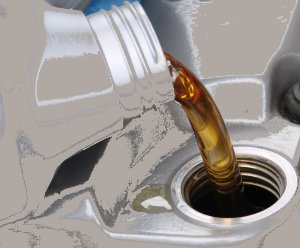Engine & Gear Oil - Recommended Viscosity vs. Outside Temperature
Oil viscosity vs. temperature.
All lubricants have practical limits when it comes to operating temperatures.
- Lower temperatures and increased viscosity may restrict lubrication - causing metal to metal contact and damage to the machines
- Higher temperatures and reduced viscosity may limit lubrication film thickness - causing metal to metal contact and damage to the machines

For most machines - like car engines - the critical point of operation is at startup before reaching operating temperatures. In cold weather lubricants with adequate viscosities at start up temperature are required.
Engine Oil
The table below indicates appropriate engine oil viscosity vs. outside (start up) temperatures.
| Engine Oil SAE Viscosity | Temperature | ||||||
|---|---|---|---|---|---|---|---|
| -20 oF (-29 oC) | 0 oF (-17.8 oC) | 20 oF (-6.7 oC) | 40 oF (4.4 oC) | 60 oF (15.6 oC) | 80 oF (26.7 oC) | 100 oF (37.8 oC) | |
| 20W-20 | |||||||
| 20W-40 | |||||||
| 20W-50 | |||||||
| 10W-30 | |||||||
| 10W-40 | |||||||
| 10W | |||||||
| 5W-30 | |||||||
| 5W-20 | |||||||
Note that machine operating temperatures - and lubricant temperatures - does not change significantly with different ambient temperatures. In most cases operating temperatures of engines are above the temperatures in the table above.
Gear Oil
The table below indicates recommended gear oil viscosity vs. outside (start up) temperatures.
| Engine Oil SAE Viscosity | Temperature | ||||||
|---|---|---|---|---|---|---|---|
| -20 oF (-29 oC) | 0 oF (-17.8 oC) | 20 oF (-6.7 oC) | 40 oF (4.4 oC) | 60 oF (15.6 oC) | 80 oF (26.7 oC) | 100 oF (37.8 oC) | |
| 75W | |||||||
| 80W | |||||||
| 80W-90 | |||||||
| 85W | |||||||
| 90 | |||||||
| 140 | |||||||
Note that the tables above indicates average data. For specific information - check manufacturing data.



